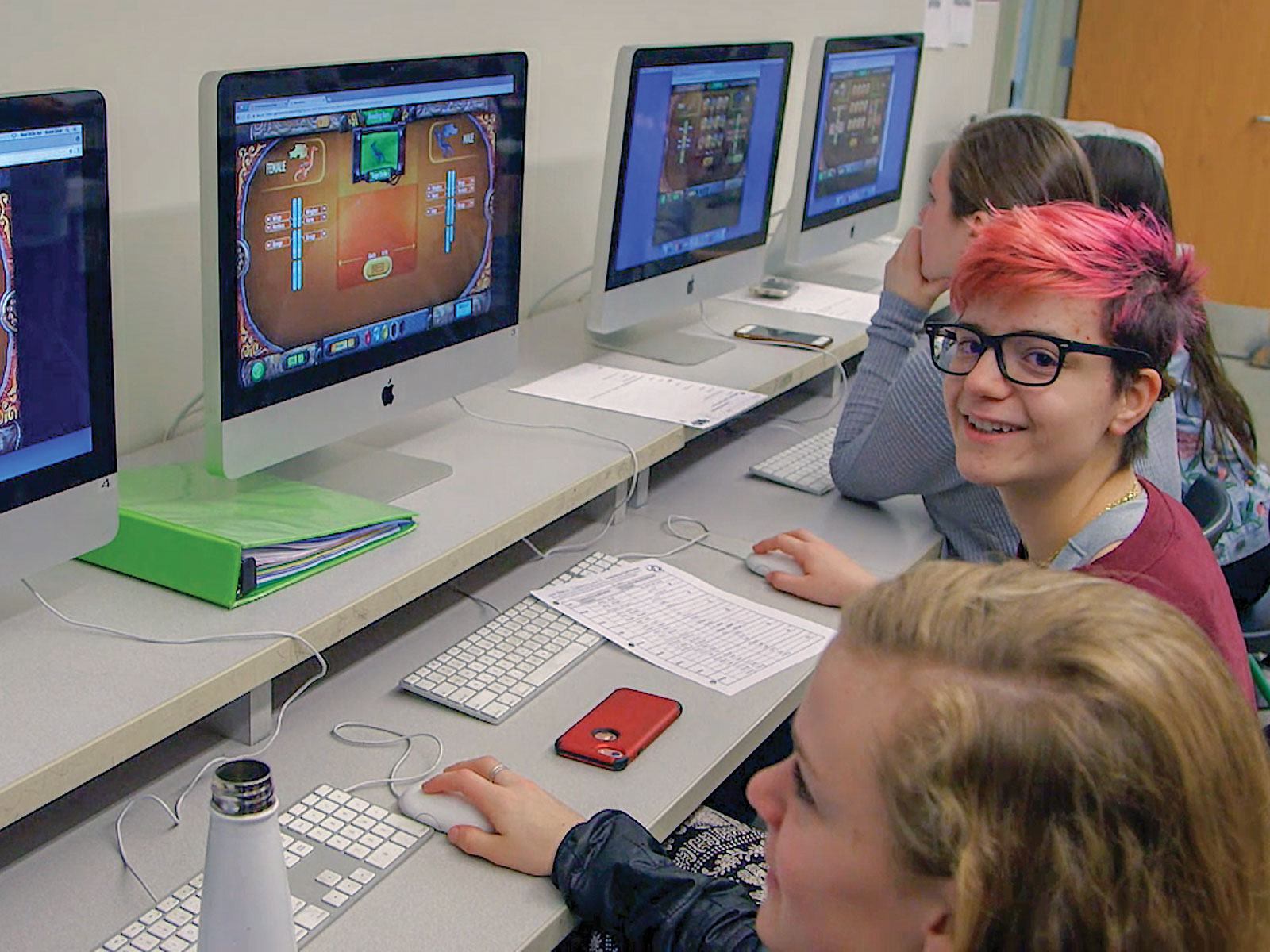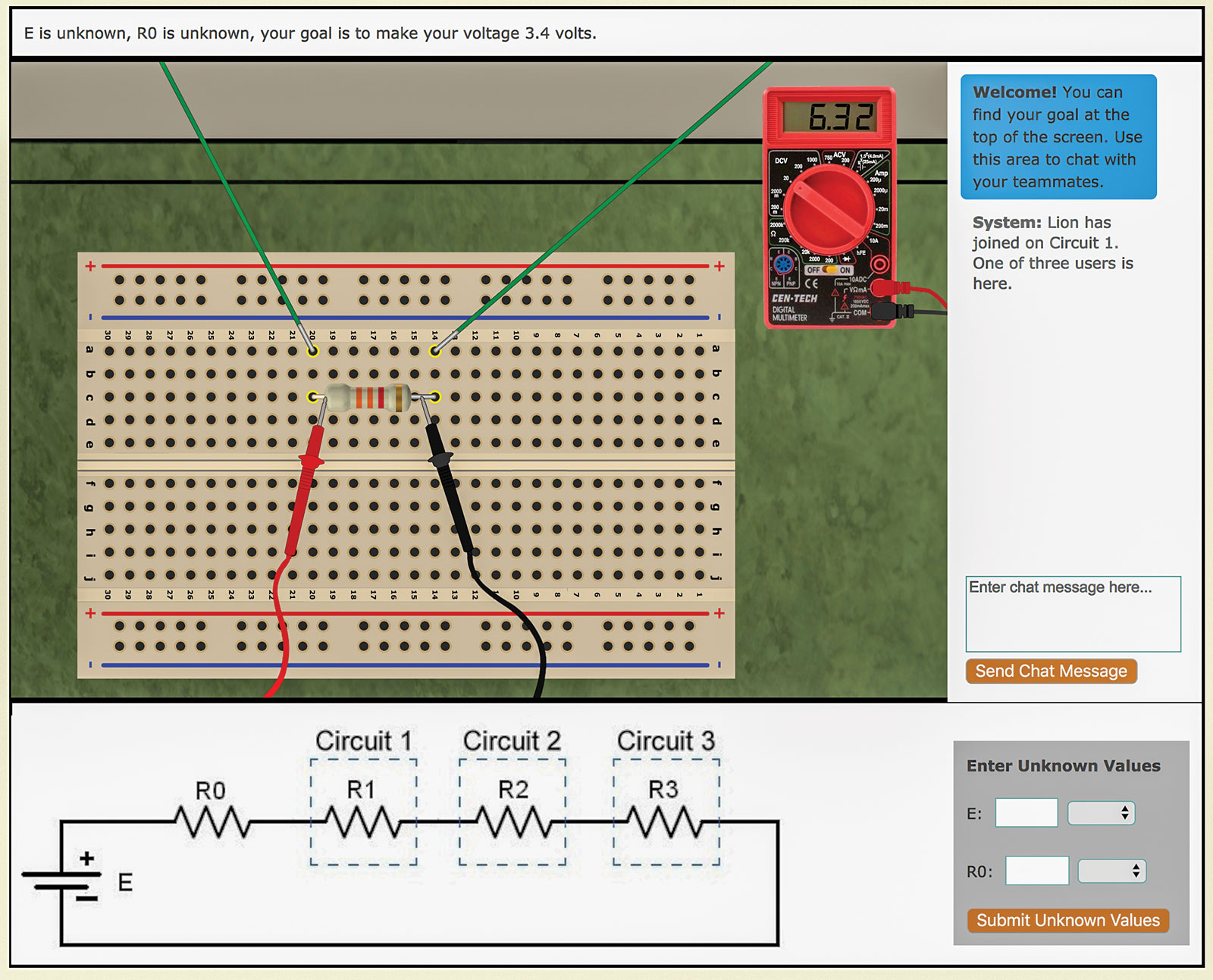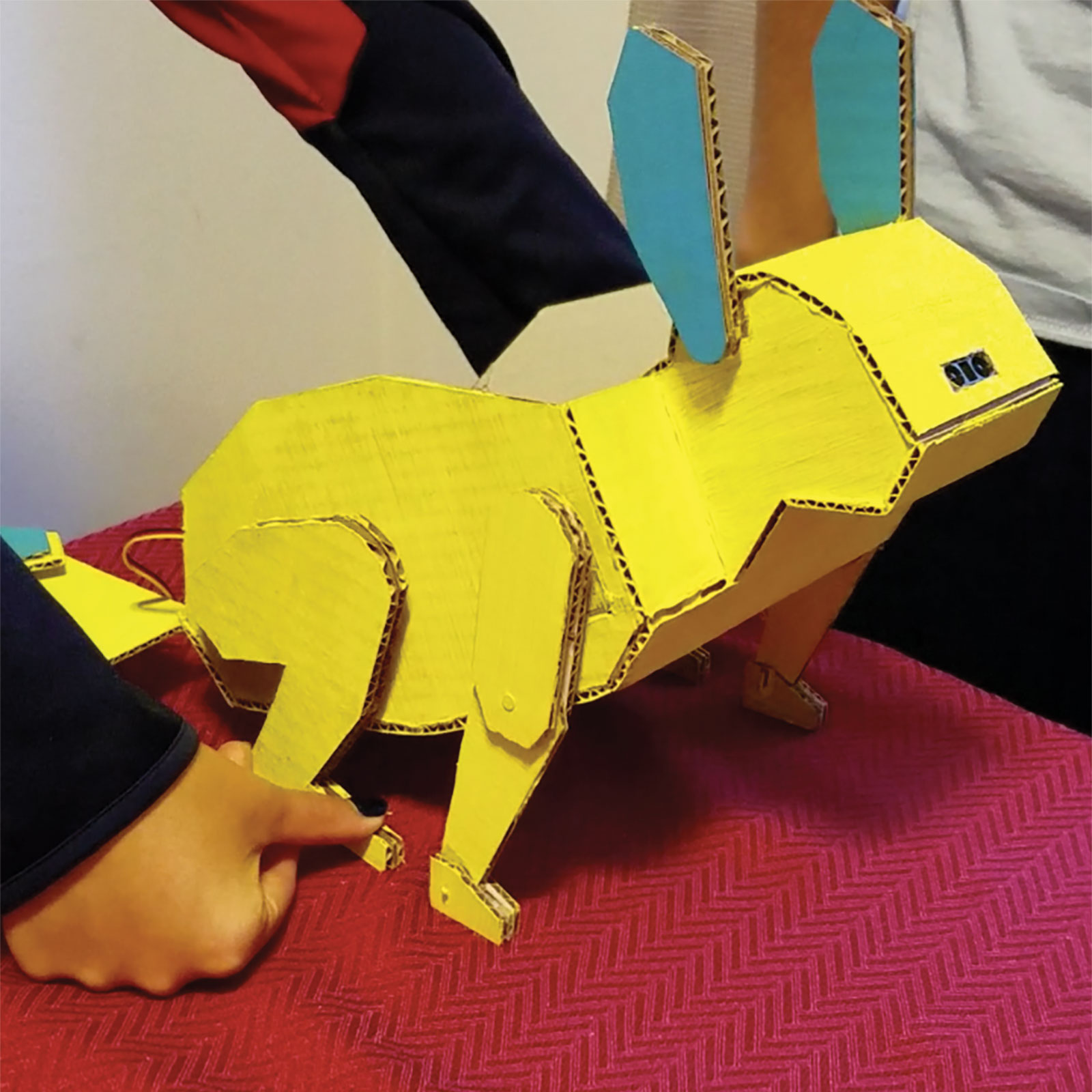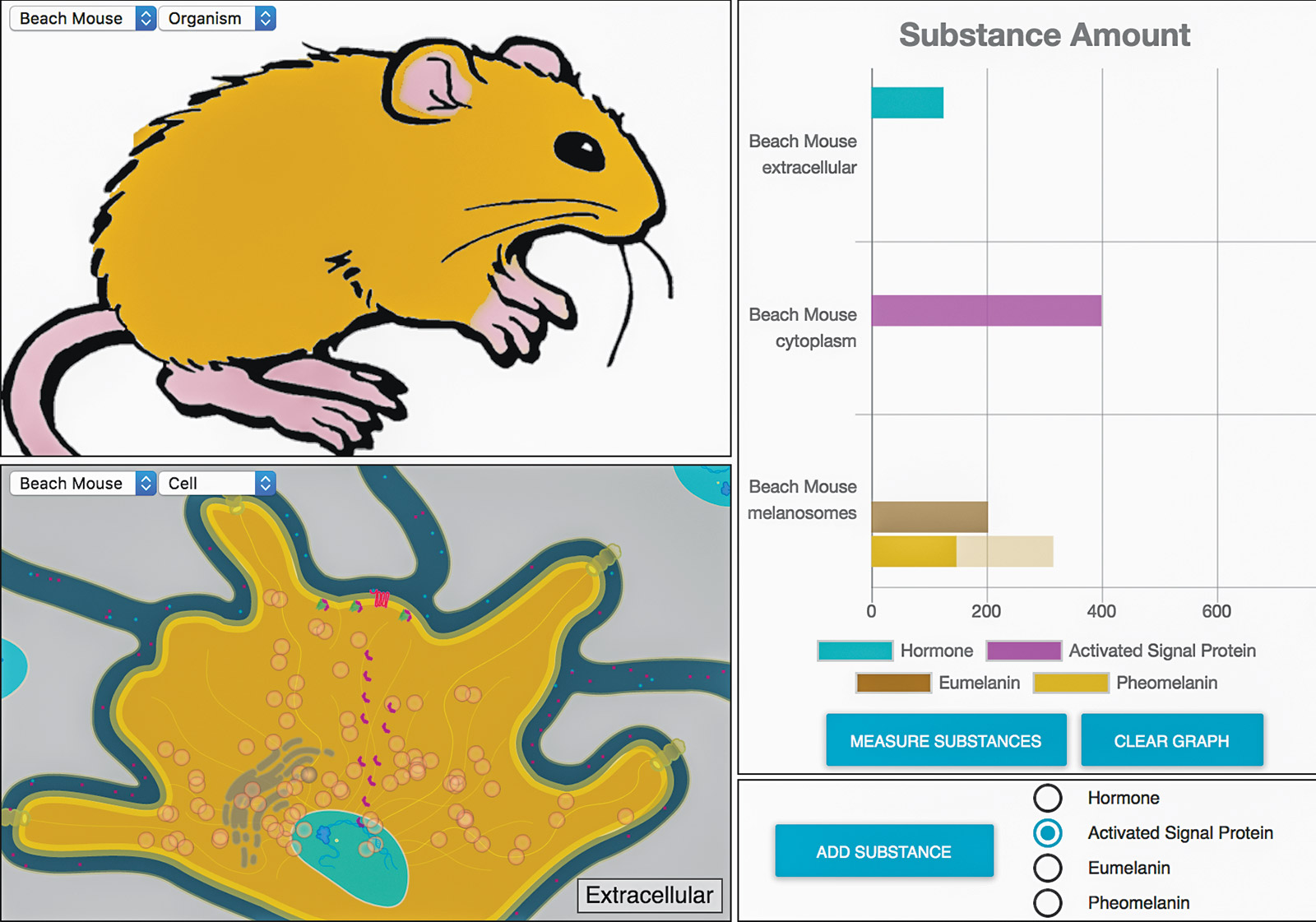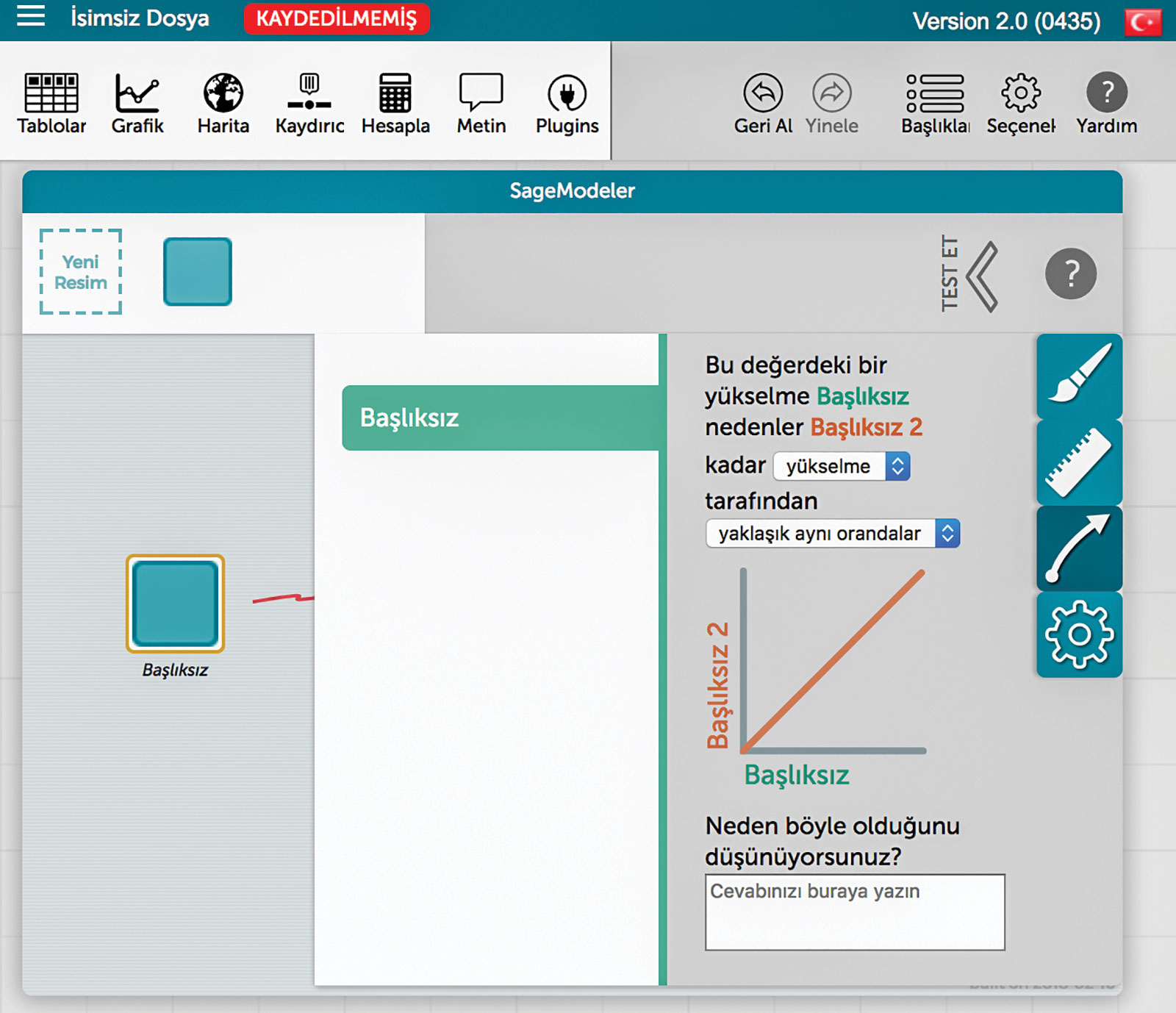What Happens When Students Try to Work Collaboratively, Finding Median in R the Common Core Way, A Case for Craft-based Engineering Education, and more in Spring @Concord
Technology Adds Depth to Three-Dimensional Learning
The Next Generation Science Standards (NGSS) and related “three-dimensional learning” approaches define a new paradigm in STEM teaching and learning that is refreshing, revolutionary, and research based. The science and engineering practices they espouse frame pedagogy in important new ways. However, shining the bright light of technology’s potential on these practices reveals intriguing new possibilities—and uncovers a few glaring gaps.
What Happens When Students Try to Work Collaboratively?
The problem is deceptively simple. The simulation consists of a variable resistor and a voltmeter with which to measure the voltage drop across the resistor. The resistor forms part of a larger simulated circuit, connected in series to three other resistors and a battery. The battery sends the same current through all four resistors, resulting in a voltage drop across each. Ohm’s Law states that those individual voltage drops can be calculated by multiplying each resistance by the current. The challenge for students: alter your resistance to achieve a specific goal voltage drop. Sounds simple, right?
Monday’s Lesson: Finding Median in R the Common Core Way
Most data scientists regret that they didn’t pick up R earlier. This top programming language offers data manipulation, graphics, simulations, and countless application packages. And it’s free! The goal of our Computing with R for Mathematical Modeling (CodeR4MATH) project is to integrate R programming and computational thinking into high school math.
Paper Mechatronics: A Case for Craft-based Engineering Education
When artists select a medium with which to create their work, the medium is both the material and the tool used to express their idea. In improvisational dance, for example, the physical space, the dancer, and the dancer’s movements together form the creative medium with which to design their performance. Malcolm McCullough argues in Abstracting Craft that computation, like traditional craft media, is a creative medium. Computation can be crafted and shaped by one’s hands in a tangible way beyond typing into a computer keyboard.
Developing Watershed Stewards
Everyone lives in a watershed, which makes us all watershed stewards. The Teaching Environmental Sustainability: Model My Watershed project—a collaboration funded by the National Science Foundation between the Concord Consortium, Millersville University, and Stroud Water Research Center—has developed a weeklong curriculum unit to help high school students understand the impact of human actions on the watershed. The curriculum incorporates innovative technologies that provide students with access to real data and real tools in actual places to make authentic decisions.
Connecting Genetics and Evolution with 3D Learning
Allele, gene, heterozygous, phenotype, polygenic trait, recessive, dominant . . . The list of terms—and facts that go with them—goes on and on. Much of traditional biology has been taught and learned as a giant vocabulary lesson along with a history of discoveries to be memorized. And as scientific research progresses, more discoveries and vocabulary are added. Is it any wonder that biology textbooks have expanded to over 1,000 pages? In this formulation, biology lessons come to resemble a lifeless catalog more than a science brimming with scenarios for investigation.
Under the Hood: Localizations with POEditor
At the Concord Consortium our goal is to increase the impact of our work so that more students in more places can engage in STEM inquiry. One way to do that is to translate our free STEM models and activities into different languages, an adaptation that’s called localization.
Innovator Interview: Hee-Sun Lee
Hee-Sun’s interest in science blossomed early, when she was only six years old, while watching an animated movie about robots saving the Earth. She became fascinated by space—by how small she was when she looked up to the sky—and in middle school she decided she wanted to work for NASA. Since she excelled in science, she thought to herself, “Think big!”
News at Concord Consortium
New Executive Vice President, Inventing New Tools for Tomorrow’s Students, and Robert F. Tinker Scholarship and Fellows Program
